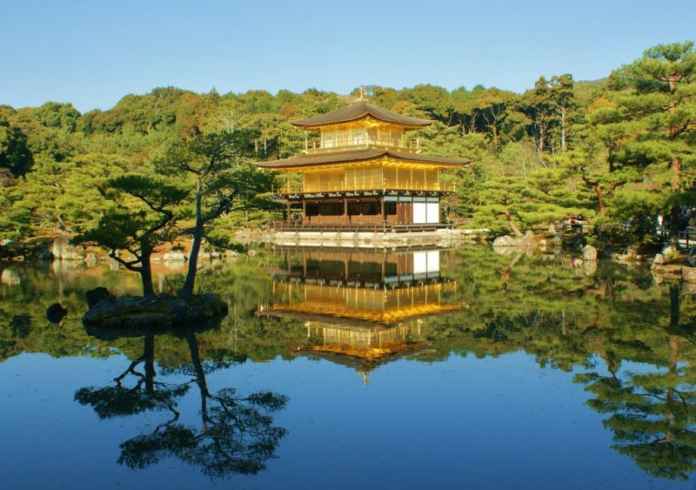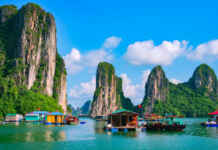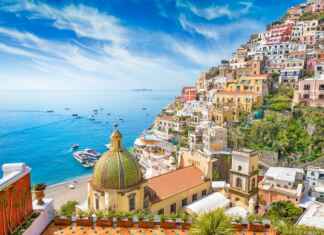People who have visited it, claim that nothing is more symbolic of Kyoto as Kinkaku-ji’s golden reflection shimmering across the rippled surface of the pond before it. The name Golden Pavilion comes from the Japanese term Kinkakuji, which literally translates into the temple of the Golden Pavilion, which is a title well justified, because the exterior of the structure is covered in gold – gold leaf.
The origins of the construction of Golden Pavillion can be traced to the 1220′s, when it was originally meant to be a villa of Kintsune Saionji. Next, Yoshimitsu, the 3rd Shogun of Ashikaga built Kitayamaden. After Yoshimitsu’s death, Kitayamaden was made into a Zen temple in accordance to his will. The current gold leaf-coated reconstruction was unveiled in 1955. The site was inscribed as a World Cultural Heritage site in 1994.
In terms of structure, the elegant building consists of three floors. Both the 2nd and 3rd floors are covered with gold-leaf on Japanese lacquer. Each floor also has a unique type of architecture to showcase.
• The 1st floor is Shinden-zukuri, which translates into the palace style. Home to the Shaka Buddha and Yoshimitsu, this floor, with its natural wood pillars and white plaster walls was used during the Heian Period.
• The 2nd floor is Buke-zukuri, that is, it has been built in the style of the samurai residences. Inside is a seated Kannon Bodhisattva surrounded by statues of the Four Heavenly Kings. However, these idols are not available for public viewing.
• The 3rd floor is Karayo style or in Zen temple style. The main purpose of the pavilion is to work as a shariden, storing relics of the Buddha. It is gilded inside and out, and is capped with a golden phoenix.
The roof, upon which the Chinese phoenix settles, is thatched with shingles.
Some other significant landmarks worth a visit inside the Golden Pavillion complex include:
• Kyoko-chi (Mirror pond). The pond contains many large and small islands. The small stone pagoda on the island is called Hakuja-no-tsuka which means the mound in memory of the white snake.
• Sekka Tei: This is the classic tea house which houses a celebrated pillar made of a nandin. The house was restored in 1997.
Important Information
Kinkaku-ji is open daily from 9am to 5pm. So visitors should plan their visit accordingly. The admission fee to the temple is ¥400. In order to access the temple, take bus numbers 101 or 205 from Kyoto Station to the Kinkaku-ji Michi bus stop. There is also the option of taking the number 59 and 12 buses to the Kinkaku-ji Mae bus stop.
Reaching Kyoto
Visitors should understand that Kyoto, which was once the capital of Japan, does not have an airport of its own. It is served by Osaka’s two airports. From Osaka, tourists can opt to travel to Kyoto via road and railway networks, which are excellent between the two cities. Overseas travelers also have the option of flying into Kansai International Airport and then take a train to Kyoto. Thus, there is no dearth of options to access the Golden Pavillion.
So if you’re planning a trip to Japan, make it a point to visit Golden Pavillion in Kyoto!












